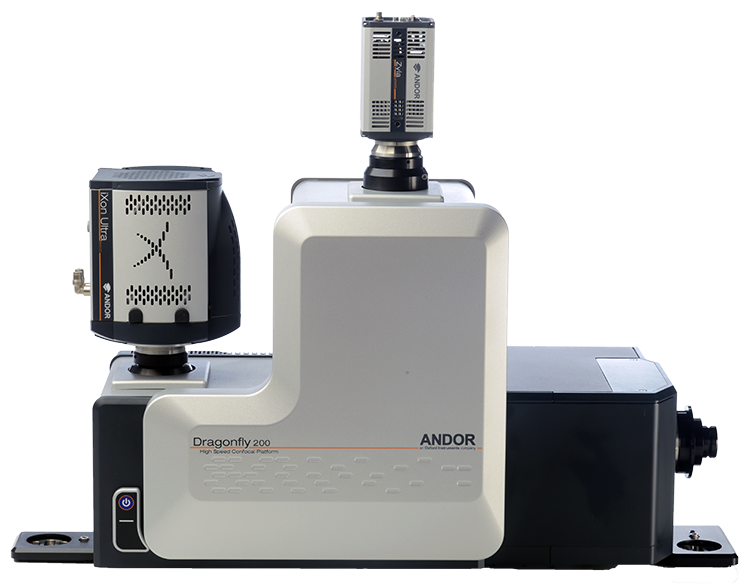Resources
 Part of the Oxford Instruments Group
Part of the Oxford Instruments Group
Expand
Collapse
 Part of the Oxford Instruments Group
Part of the Oxford Instruments Group
Until recently, there was no instrument compatible with live-cell imaging that could deliver deep-tissue imaging, as well as single-molecule localisation microscopy. In 2017, Andor launched Dragonfly, a multipoint confocal system that was a revolution in the way imaging systems are conceived.

Dragonfly makes it on to this list as it is a new approach to confocal imaging systems - a confocal that is both fast and has multiple imaging techniques embedded in the system. This means that researchers can use confocal, multicolour TIRF, widefield, SRRF-Stream real-time super-resolution and 3D dSTORM with just one system. Samples from up to 2.5 mm thick can be imaged at high speeds. Samples can also be imaged at very high resolution achieving up to 20 nm resolution. Dragonfly gives the scientists the freedom to choose the most suitable imaging modality for their experiments.
Dragonfly uses the Borealis illumination which provides excellent uniformity across the image. Borealis illumination together with the image stitching capability, allows larger model organisms or tissue sections to be imaged quickly and effectively.
Large data sets can be subsequently be imaged in Imaris making for a very efficient workflow.
The Dragonfly is typically configured using an EMCCD camera for when the maximum sensitivity is required, and a sCMOS camera, either Zyla or Sona, when field of view and imaging speed are most important.
Date: February 2020
Author: Dr Alan Mullan and Dr Claudia Florindo
Category: Application Note
